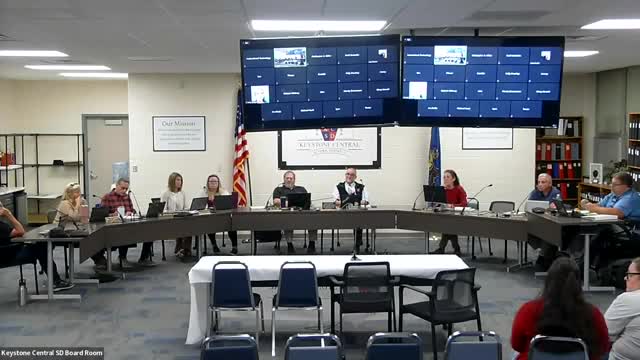Educators clash over social emotional learning strategies
October 04, 2024 | Keystone Central SD, School Districts, Pennsylvania
This article was created by AI summarizing key points discussed. AI makes mistakes, so for full details and context, please refer to the video of the full meeting. Please report any errors so we can fix them. Report an error »

During a recent school board meeting, heated discussions emerged regarding the implementation of new educational programs, particularly in the realm of social-emotional learning (SEL) and curriculum development. Board members expressed concerns about the effectiveness and appropriateness of purchasing new software packages, with one member questioning the value of spending $46,000 on a program that may not significantly improve the district's performance, which has historically ranked in the bottom tier of Pennsylvania schools.
The conversation shifted towards the potential for the district's educators to develop their own curriculum in-house, drawing on the expertise of teachers and administrators. One board member advocated for this approach, emphasizing the importance of utilizing local talent to create a tailored program rather than relying on external software solutions. This sentiment was echoed by several educators, including Tyler Barth, principal at Robb Elementary School, who passionately defended the necessity of SEL programs. Barth highlighted the critical role these programs play in supporting students facing significant emotional and behavioral challenges, asserting that relationships built through SEL are foundational for academic success.
Despite the advocacy for SEL, some board members expressed skepticism about its effectiveness, questioning whether the current initiatives were yielding tangible improvements in student behavior and academic performance. They pointed to the district's low rankings compared to neighboring schools and suggested a need to prioritize traditional academic skills over emotional support.
The meeting also featured a call for transparency and accountability in the implementation of any new programs, with board members requesting regular updates and feedback from teachers and principals to assess the impact of these initiatives. The discussion underscored a broader debate within the district about balancing emotional learning with academic rigor, as well as the challenges of meeting diverse student needs in a changing educational landscape.
As the board continues to navigate these complex issues, the emphasis remains on finding effective solutions that prioritize student well-being while also addressing academic performance.
The conversation shifted towards the potential for the district's educators to develop their own curriculum in-house, drawing on the expertise of teachers and administrators. One board member advocated for this approach, emphasizing the importance of utilizing local talent to create a tailored program rather than relying on external software solutions. This sentiment was echoed by several educators, including Tyler Barth, principal at Robb Elementary School, who passionately defended the necessity of SEL programs. Barth highlighted the critical role these programs play in supporting students facing significant emotional and behavioral challenges, asserting that relationships built through SEL are foundational for academic success.
Despite the advocacy for SEL, some board members expressed skepticism about its effectiveness, questioning whether the current initiatives were yielding tangible improvements in student behavior and academic performance. They pointed to the district's low rankings compared to neighboring schools and suggested a need to prioritize traditional academic skills over emotional support.
The meeting also featured a call for transparency and accountability in the implementation of any new programs, with board members requesting regular updates and feedback from teachers and principals to assess the impact of these initiatives. The discussion underscored a broader debate within the district about balancing emotional learning with academic rigor, as well as the challenges of meeting diverse student needs in a changing educational landscape.
As the board continues to navigate these complex issues, the emphasis remains on finding effective solutions that prioritize student well-being while also addressing academic performance.
View full meeting
This article is based on a recent meeting—watch the full video and explore the complete transcript for deeper insights into the discussion.
View full meeting